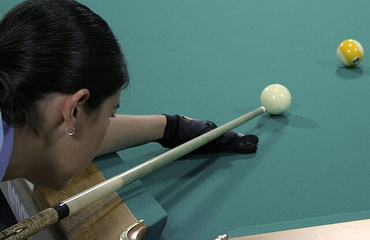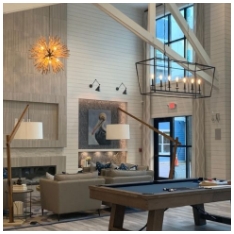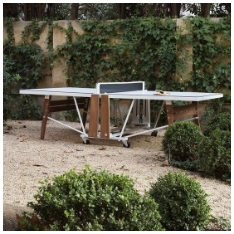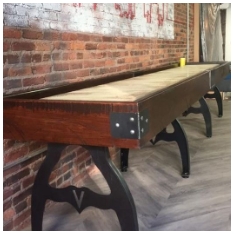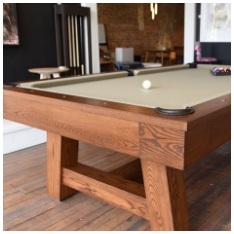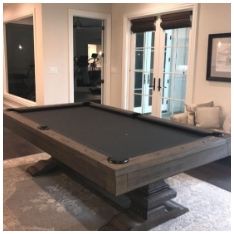Whether you're a casual player or aiming to compete seriously, choosing the right pool cue can improve your performance. Pool cues vary in weight, length, construction materials, and tip hardness. Understanding these differences is essential for selecting a cue that suits your playing style and goals.
This guide outlines what to consider before purchasing a pool cue and how each component influences your game.
Why Your Pool Cue Choice Matters
The pool cue is more than just a stick it’s your primary tool. A well-chosen cue helps with accuracy, comfort, and control. If you're using a house cue at your local pool hall, you may find the quality inconsistent or the weight unsuitable for your stroke.
Investing in your own cue ensures consistent play. The better your cue complements your style, the more natural your shots feel. Understanding cue components helps eliminate trial and error.
1. Cue Length and When It Matters
Standard pool cues are 57 to 59 inches long. Most adults find this length comfortable. However, if you’re shorter than average or buying for a young player, a shorter cue (48" or 52") may offer more control.
- Standard Cue (58 inches): Suitable for most players.
- Short Cue (52 inches or less): Ideal for junior players or tight spaces.
- Extra-Long Cues (60 inches): Sometimes used by tall players or in specific shots.
Your reach, height, and the space around your table determine what’s best.

2. Cue Weight: Balance and Stroke
Cue weight typically ranges from 17 to 21 ounces. Weight affects your shot’s power and how the cue feels during use.
- 17–18 oz: Lighter cues help with finesse and spin. Good for precise, soft shots.
- 19 oz (most common): Offers a balance of control and power.
- 20–21 oz: Heavier cues add force to your shots. Suitable for breaking or power players.
Beginners often start with 19 oz for its versatility.
3. Shaft Materials and Taper
The shaft is the top portion of the cue. It affects control, flexibility, and cue ball feedback.
- Maple: The most common material—offers strength and a smooth finish.
- Carbon Fiber: Gaining popularity for its durability and consistent play.
- Fiberglass: Less common, often used in budget cues or for casual use.
Taper refers to how the shaft narrows toward the tip. Two common types:
- Pro Taper: Remains consistent for several inches near the tip—preferred by many professionals.
- European Taper: Gradually narrows from the joint to the tip—may feel stiffer.
4. Tip Type and Hardness
Cue tips come in soft, medium, and hard options. The tip affects how the cue interacts with the cue ball.
- Soft Tips: Absorb more impact, ideal for adding spin, but wear out faster.
- Medium Tips: Offer a balance between control and durability. Recommended for most players.
- Hard Tips: Provide more power and less spin. Durable and often used for breaking.
Tip replacement is part of cue maintenance, so choose one that fits your regular shot style.
5. Cue Wraps and Grip Materials
Wraps affect how the cue feels in your hand. Your grip should be stable without slipping or creating friction.
- Irish Linen Wraps: Common and absorb moisture well.
- Leather Wraps: Provide a firmer grip and classic feel.
- Rubberized Grips: Used in some models for maximum traction.
- Wrapless: Some prefer the smooth, uninterrupted feel of wood.
Choose based on comfort and hand sweat levels. Try several types if you're unsure.

6. Joint Types and Cue Assembly
Cues typically come in two pieces connected by a joint. The joint type influences the cue’s feel and feedback.
- Stainless Steel Joints: Provide a solid, consistent hit.
- Wood-to-Wood Joints: Offer a softer hit with more natural feel.
- Quick-Release Joints: Allow for fast cue assembly and disassembly—helpful for players on the go.
Consider how often you'll transport your cue and how much feedback you want in your stroke.
7. Cue Brands and Budget Considerations
Pricing varies depending on material, brand, and build quality. While expensive cues offer precision and durability, there are quality options available for under $200.
Entry-Level Brands:
- Viper, Players, Action – affordable and good for beginners.
Mid-Range Brands:
- Lucasi, McDermott, Meucci – offer higher build quality and improved feel.
High-End Brands:
- Predator, Pechauer, Schon – designed for professional-level play.
Decide how frequently you’ll play and how much you're willing to invest. A consistent, well-made cue helps you play better regardless of skill level.
8. Specialty Cues: Break, Jump, and Hybrid Options
Advanced players may invest in additional cues:
- Break Cue: Designed for the opening shot—heavier with a harder tip.
- Jump Cue: Lightweight and short, used to make the cue ball hop over obstacles.
- Hybrid or Multifunctional Cues: Combine features of both break and jump cues.
These are optional but beneficial for players looking to expand their skillset.
9. Testing Before Buying
Whenever possible, test a cue before buying. Hold it, take a few shots, and see how it feels. Pay attention to balance, weight, grip, and tip response. Online reviews can help, but hands-on experience makes a difference.
If buying online, ensure the seller has a clear return policy and warranty.
Conclusion: Take Time to Choose the Right Cue
The right cue improves your comfort, accuracy, and confidence on the table. Start with the basics: choose the right weight, tip hardness, and grip. From there, look at shaft material, joint construction, and brand reputation.
Whether you're playing for fun or entering tournaments, following this Pool Cue Buying Guide: Find the Perfect Cue for Your Game ensures your equipment supports your development and enjoyment.
